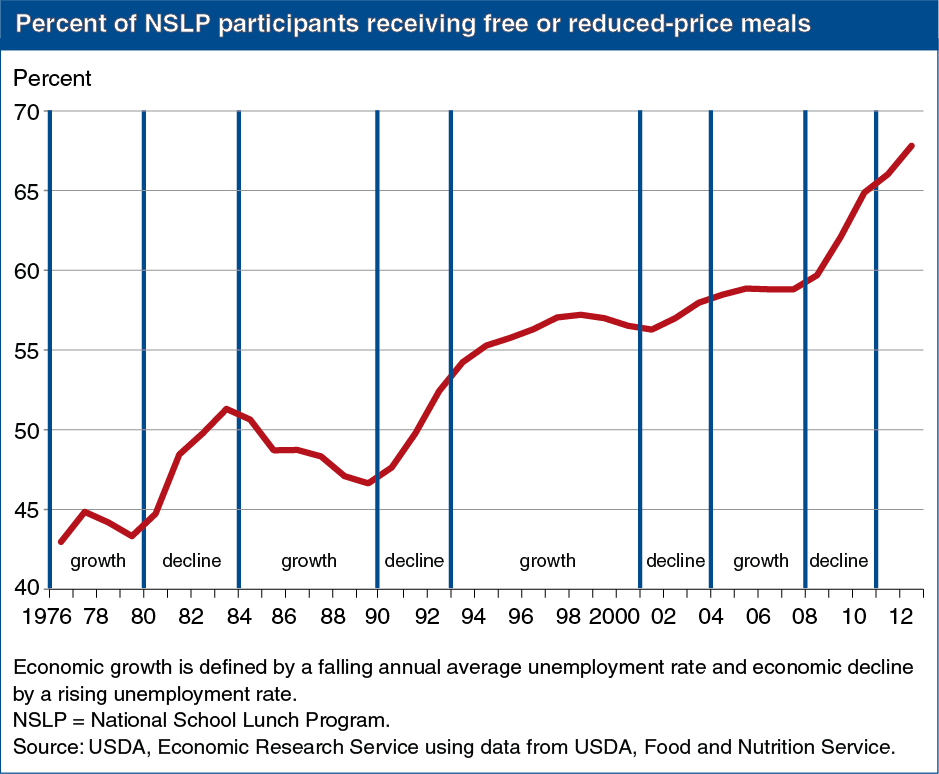During economic downturns, more children receive free and reduced-price school lunches
- by Economic Research Service
- 5/30/2013

USDA’s National School Lunch Program (NSLP) is the Nation’s second largest food and nutrition assistance program. In fiscal year 2012, expenditures totaled $11.6 billion and an average 31.6 million children participated in the program on a typical school day. While total participation is closely linked to school enrollment and does not vary with economic conditions, the share of children receiving free or reduced-price lunches rises during economic downturns. During the Great Recession (December 2007 to June 2009) and continuing through 2010, the share of NSLP participants receiving free or reduced-price meals grew from 59 to 65 percent. Preliminary data for fiscal years 2011 and 2012 show that this share continued to rise even after the unemployment rate started to decline, suggesting that economic conditions did not improve enough to raise people out of poverty and the need for assistance remained high. This chart appears in the May 2013 Amber Waves article, “Economic Conditions Affect the Share of Children Receiving Free or Reduced-Price School Lunches.”

